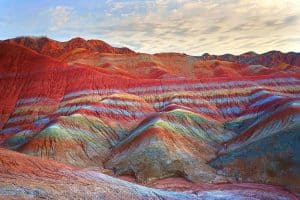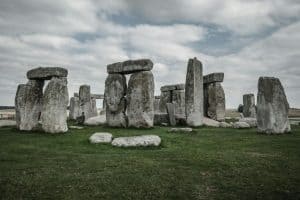- TRAVEL GUIDES
arrow_drop_down
- Canada
- United States
- Sunny Destinations
arrow_drop_down
- VIEW ALL
- BUCKET LIST
- ABOUT
- CONTACT
15 Most Dangerous Tourist Attractions You Won’t Believe Exist
- Travel
-
Aug 18
- Share post

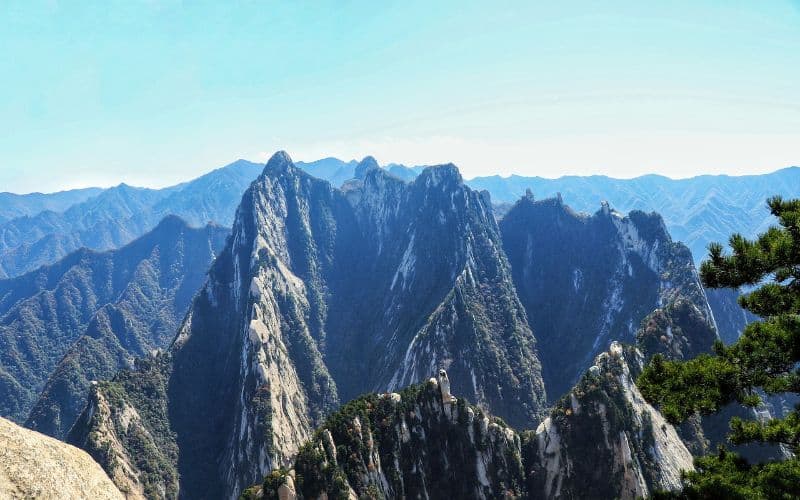
1. Mount Huashan, China
Mount Huashan, located in Shaanxi province, China, offers one of the most thrilling and perilous hiking experiences in the world. The mountain is famous for its Plank Walk, a heart-pounding trek along narrow wooden planks bolted to the cliffside.
Reaching the southern peak at 7,087 feet, you will encounter a tea house that feels like a reward after a daring journey. The mountain’s five summits, each featuring religious structures, offer unique views and experiences.
2. Death Road, Bolivia
Death Road in Bolivia, known locally as El Camino de la Muerte, is infamous as one of the world’s most dangerous roads. It’s a narrow, winding path that’s only about three meters wide, stretching over 40 miles with sheer cliffs and minimal guard rails.
During the 1990s, around 300 people died each year on this road, making it a terrifying legend. Despite improvements with a new, safer road for vehicles, the original Death Road remains a popular tourist spot for those seeking adrenaline.
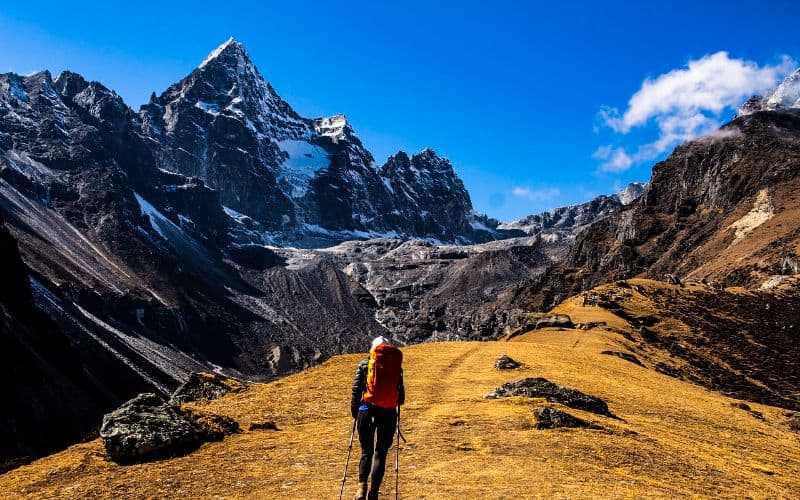
3. Mount Everest
Mount Everest stands as the highest peak on Earth, attracting thrill-seekers from all over. The notorious “Death Zone” above 8,000 meters highlights the dangers. Many climbers lose their lives each year due to harsh conditions and high altitudes.
4. Half Dome, Yosemite National Park
If you’re into breathtaking views and a heart-racing challenge, Half Dome at Yosemite National Park is calling your name. Standing at 5,000 feet, the climb to the summit is not for the faint-hearted. The last 400 feet involve clinging to cables bolted into the rock.
The trail is one of the most dangerous hikes in the United States. Over the past 15 years, at least 300 accidents and 12 deaths have been recorded on Half Dome. Causes include falls, lightning strikes, and heart attacks.
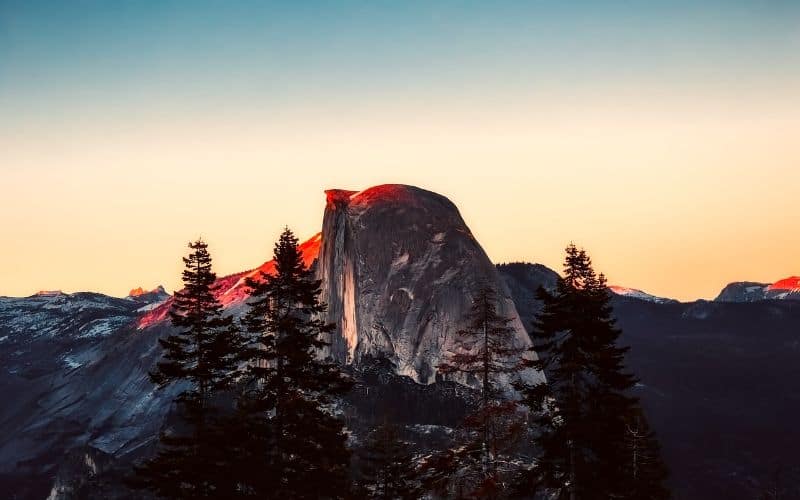
5. Devil’s Pool, Victoria Falls
Devil’s Pool, perched at the edge of Victoria Falls in Zambia, is one of the most dangerous tourist attractions in the world. This natural rock pool sits right at the precipice of a massive 355-foot waterfall.
During the dry season (August to December), the water levels drop low enough to create a calm pool. You can swim just inches from the deadly edge; the slippery rocks and swift currents require caution.
6. El Caminito Del Rey, Spain
El Caminito Del Rey is known for being Spain’s most dangerous hike. This concrete trail stretches over 100 meters high through steep limestone cliffs near El Chorro and leads into a hidden valley.
The pathway, originally constructed over 100 years ago, was once considered the most dangerous in the world. Since its renovation in 2015, it now offers a safer yet still exciting experience.
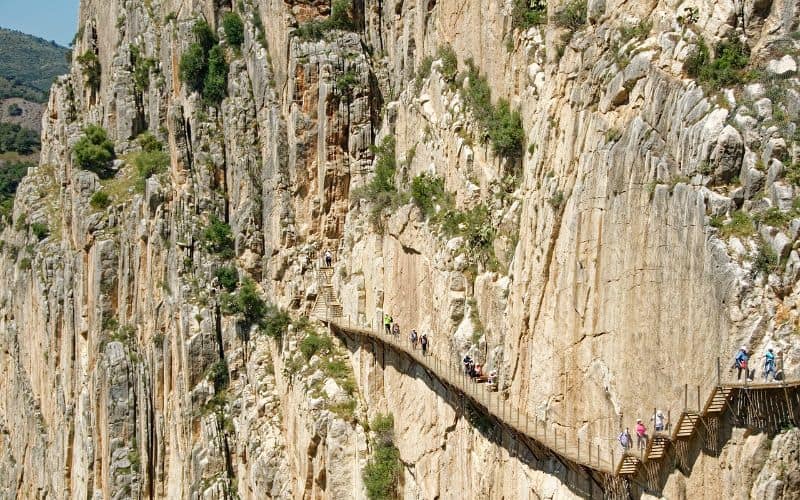
7. Aokigahara Forest, Japan
Aokigahara Forest hugs the base of Mount Fuji and spans 30 square kilometers. It’s known for its dense trees and eerie silence, due to the volcanic rock that absorbs sound. The forest is famously called the “suicide forest” because many people go there to take their lives each year.
Navigating through Aokigahara can be challenging. The thick trees and tangled roots make it easy to get lost. This forest is steeped in local lore involving yūrei, which are believed to be wandering souls or spirits. This adds a spooky layer to this already unsettling place.
8. Danakil Depression, Ethiopia
The Danakil Depression in Ethiopia is one of the most dangerous tourist attractions in the world. Known for its extreme environment, it’s located in the Afar Triangle. Temperatures often exceed uncomfortable limits, and the area is famous for volcanic activity and salt flats, which create stunning yet harsh landscapes.
Due to its remote and harsh conditions, visiting the Danakil Depression requires careful planning. The region’s main attractions include the Erta Ale Volcano, salt pans, and colorful hydrothermal fields. It’s crucial to go with experienced guides, as the heat can cause severe dehydration.
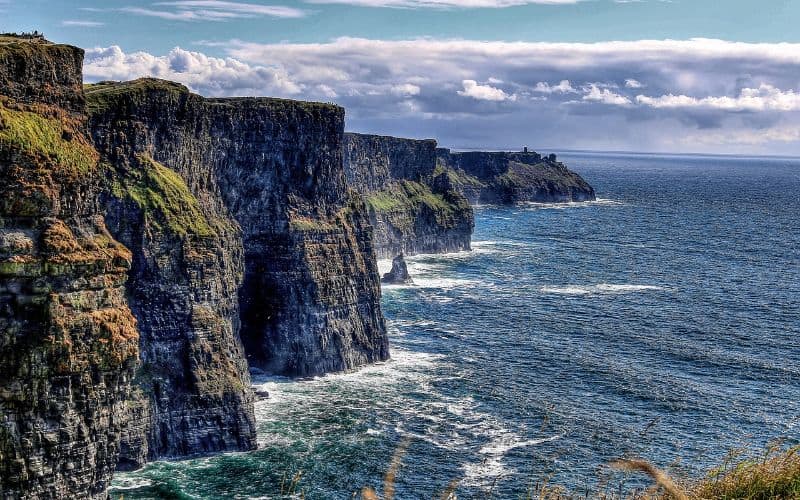
9. Cliffs of Moher, Ireland
Discover the majesty and sheer thrill of the Cliffs of Moher in Ireland. These cliffs tower over the Atlantic Ocean, reaching heights of up to 214 meters. You can walk along 14 km of paths from Doolin to Hags Head, soaking in dramatic views that will take your breath away.
Yet, visiting the Cliffs of Moher is not without its risks. Thousands of people risk their lives every year by straying off the official trail. Stay on the paths to avoid the danger of falling into the sea below.
10. The Maze, Canyonlands National Park
The Maze in Canyonlands National Park is a thrilling and challenging hike. Known for its intricate canyons and rugged terrain, it attracts adventurous hikers. This hike is virtually trailless, making navigation tricky. Only about 2,000 people venture here annually.
The remoteness and lack of water sources make it crucial to prepare well. Hikers should carry ample water and supplies. Unexpected weather conditions can make the descent of the Flint Trail particularly dangerous.
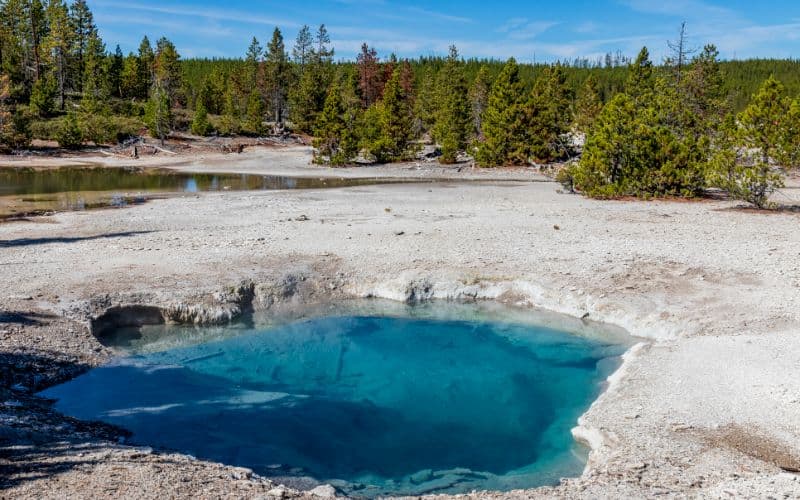
11. Yellowstone National Park, USA
Yellowstone National Park can be both breathtaking and dangerous. One of the largest threats to visitors isn’t wildlife—it’s the park’s hot, near-boiling hydrothermal waters. These thermal features can be hidden under thin crusts, making walking off-path perilous.
12. Trolltunga, Norway
Trolltunga in Norway is a breathtaking spectacle! This stunning rock formation juts out over Lake Ringedalsvatnet, offering mesmerizing views. The hike to Trolltunga is challenging. It’s 28 km (17.4 miles) round trip with an elevation gain of 800 meters (2,625 feet).
You’ll need 10-12 hours to complete it and the trek can be dangerous. There are about 40 yearly rescue operations, and sadly, some have fallen to their deaths.
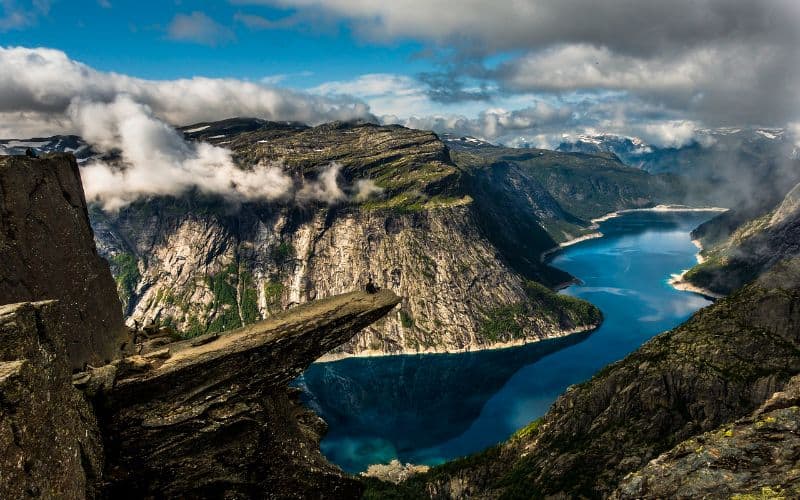
13. Kjeragbolten, Norway
Kjeragbolten is one of Norway’s most thrilling tourist attractions. Located in southern Norway, this massive boulder is wedged between two cliffs almost a kilometer above sea level.
Stepping onto the boulder requires a good bit of nerve and balance. For those less inclined towards such daring feats, the surrounding area offers stunning views worth the trek.
14. Angel’s Landing, Zion National Park
Angel’s Landing in Zion National Park is renowned for its stunning views and challenging trails. This adventure isn’t for the faint-hearted. As you climb 1500 feet, the narrow spine of the trail reveals breathtaking yet dizzying drop-offs between 800 to 1000 feet.
The hike requires a good level of physical fitness to safely navigate the steep ascents and descents. Despite the thrill, the hike has had its tragic moments with several fatalities.
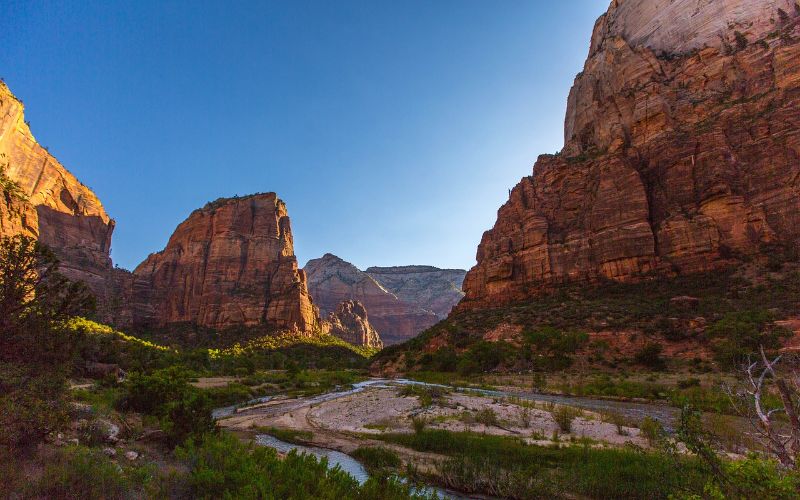
15. Skeleton Coast, Namibia
Skeleton Coast in Namibia is one of the most dangerous tourist attractions in the world. This 300-mile stretch of shoreline is known for its treacherous conditions and haunting beauty. Located between the scorching Namib Desert and the icy Atlantic Ocean, it’s both stunning and perilous.
Venturing to Skeleton Coast brings you face-to-face with the harsh wilderness. Complete isolation defines the trip, which adds to the thrill. The combination of desolation and natural wonder makes it an unmatched destination.


